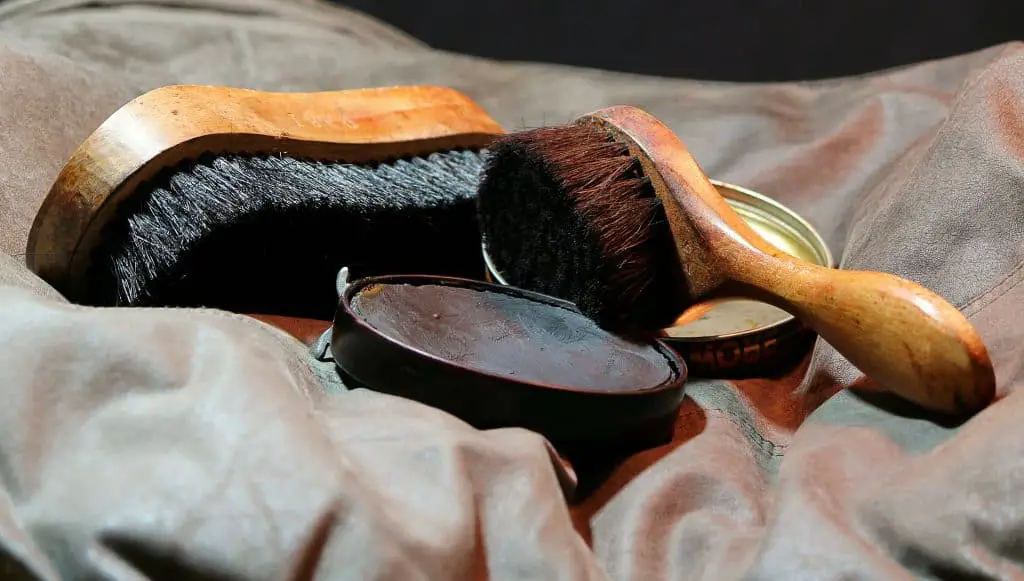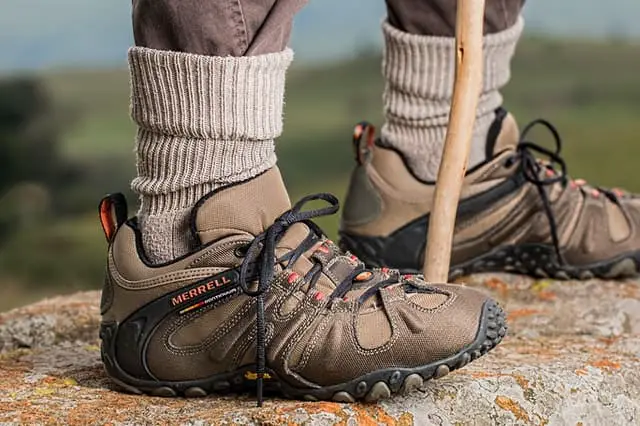As interest in extreme outdoor pursuits has soared in recent years, so has demand for garments that can withstand the rigors of these activities. Many enthusiasts already recognize the Gore-Tex brand, as it has become synonymous with waterproof, windproof, and breathable clothing.
However, there are other companies seeking to capture the market with the latest innovations in technical wear. One of these is Toray Group, which produces Dermizax.
Find out what makes Dermizax different from Gore-Tex, how they are similar, and most importantly, which product might be right for you.
Dermizax vs. Gore-Tex In 2025
Dermizax and Gore-Tex are synthetic materials that are both used in the manufacture of waterproof and windproof gear. The products are designed for performance wear and outdoor wear but they use different methods of manufacture. Gore-Tex is the more commonly used of the two but they both produce high-quality products.
Here’s a comparison table that shows the Hydrostatic Head and MVTR ratings for both Gore-Tex and Dermizax products.
| Product | Hydrostatic Head (waterproofness) | MVTR (breathability) |
| Gore-Tex | 20,000mm-28,000mm | 25,000g/mm2/24hr |
| Dermizax | 20,000mm | 10,000g/mm2/24hr |
Important Terms To Know
Outdoor garments need to be functional and comfortable in all sorts of extreme conditions. The fabric needs to be waterproof, windproof, and breathable for maximum comfort.
Being durable and lightweight are also important factors. The challenge is for a product to be both waterproof, meaning no water gets in, yet also breathable, meaning the humidity and sweat from exertion can get out.
Hydrostatic Head (HH)
Hydrostatic Head is a fancy way of stating how waterproof a fabric is. It is measured in millimeters (mm), with higher numbers indicating a higher degree of waterproofness.
Generally, a rating of 5,000 to 20,000mm means the fabric is waterproof unless subject to considerable pressure. 20,000mm and above means the fabric is guaranteed waterproof.
Moisture Vapor Transmission Rate (MVTR)
MVTR measures how breathable or permeable a fabric is. It is measured in grams per millimeters squared over 24 hours of time (g/mm2/24h).
Higher numbers indicate a higher degree of permeability, meaning more water vapor (basically, humidity and sweat) can pass out of the material, keeping you warm, comfortable, and dry.
Why These Numbers Are Important
These numbers are a handy way to decipher the often overwhelming amount of information out there regarding technical wear. Just know the higher both of these numbers, the more waterproof and breathable the material.
Gore-Tex Summary
Gore-Tex is a type of durable, windproof, and waterproof synthetic fabric and is the market leader in its industry. Gore-Tex is designed to repel wind and water on the outside and allow perspiration to escape from the inside.
It is used to make outdoor wear including ski wear, jackets, footwear, headwear, and gloves. Gore-Tex is marketed as durable and guaranteed to keep you dry.
Clothing made with the Gore-Tex is suitable for a variety of outdoor sports and activities including hunting, mountaineering, and climbing. Even spacesuits are sometimes made with Gore-Tex.
Gore-Tex Features
Gore-Tex is made from a fabric called polytetrafluoroethylene that has been stretched and cut into required shapes. This fabric is covered with tiny holes which are the secret to the effectiveness of Gore-Tex products.
The stretched fabric is bonded with polyurethane before being sewn into the products it is being manufactured for.
Membrane
Products made from Gore-Tex are completely waterproof and windproof. This is because of the microporous membrane made from Teflon. ‘Microporous’ refers to the tiny holes that are too small for water drops to pass through but are large enough to allow vapor to escape.
The microporous Gore-Tex membrane is layered between the outer and inner layers of fabric and these layers are laminated together.
Breathability
While Gore-Tex is completely waterproof, it is also ventilated so it not only keeps you dry but helps to stop you from overheating from activity, making it a popular performance wear material as well as outdoor wear suitable for use in different weather conditions.
As well as manufacturing their own clothing and accessories, Gore-Tex is used by brands such as Ecco, Adidas, Nike, and Patagonia.
Let’s have a look at some pros and cons of Gore-Tex.
Pros of Gore-Tex
Gore-Tex materials are extremely breathable while still being waterproof. They’re also designed with high-quality materials that make them durable and perfect for intense activities.
Alongside being waterproof, Gore-Tex products are windproof which is a great feature in most cases.
No matter what type of gear you’re looking for, Gore-Tex most likely has a product that matches what you need in their inventory, covering all activities and conditions.
Cons of Gore-Tex
The main downside to Gore-Tex products is that they can be more costly than other available options. They do have a higher price point, however, the durability of the gear can make up for the cost.
When compared directly to Dermizax, Gore-Tex is not as breathable and is more prone to overheating over time as the waterproof coating begins to wear. Thankfully it’s not too difficult to keep your Gore-Tex clean and water-resistant.
Because Gore-Tex products are made with ePTFE, they don’t have the best environmental impact during the manufacturing process.
Dermizax Summary
Like Gore-Tex, Toray is a manufacturer of textiles and fabrics used for outdoor clothing. Toray products offer the same promises of waterproofness, wind protection, and breathability as Gore-Tex and they perform the same functions.
However, there are some differences in how Toray products are made and function that sets them apart from Gore-Tex.
Dermizax Features
Toray products are made with their trademarked Dermizax. Dermizax is made from a thin film of polyurethane that absorbs water vapor.
Membrane
While Gore-Tex has a microporous membrane, Toray products have a hydrophilic membrane. Toray’s Dermizax is their waterproof fabric technology designed specifically for outdoor wear and sports.
Toray’s Dermizax hydrophilic membrane also sits between the outer layer and inner lining of the material to provide wind protection and waterproofness from the outside and breathability from the inside.
Unlike Gore-Tex, the Dermizax membrane is not porous. Instead, water is repelled through what is called the ‘monkey-bar’ process. Water molecules move through the fabric eventually escaping through the top layer.
Breathability
A big advantage of Dermizax is that the more you sweat, the more breathable the material becomes due to the way the membrane is manufactured. This makes Toray products a good choice for more intensive outdoor sports.
Toray’s Dermizax membrane is the preferred material for brands such as Ziener, Bergan’s, and Ortovox.
Here are some of the pros and cons of Toray products.
Pros of Dermizax
The waterproof rating for Toray comes in at 20,000 mm, which falls under the status of high resistance. This is better than many of the other cheaper options on the market.
Some materials become less breathable the more water-resistant they are, but Toray products have more breathability as you begin to sweat.
Another nice feature is that there are three different variations of Toray’s Dermizax, so you can find the one that best matches your activity level.
The last pro is that it’s made of Polyurethane, which is recyclable so it has a less negative impact on the environment.
Cons of Dermizax
While products made with Dermizax are waterproof, they can still hold on to water, which has the potential of making them heavy to wear.
How Are Dermizax and Gore-Tex Similar?
Both Dermizax and Gore-Tex use composite layering to achieve the desired combination of breathability, durability, and waterproofness. Both use either 2-layer construction (emphasizing lightweight breathability) or 3-layer construction (emphasizing durability).
Both Dermizax and Gore-Tex partner with a variety of clothing and equipment manufacturers.
How Are Dermizax and Gore-Tex Different?
The polyurethane membrane in Dermizax is non-porous, and the ePTFE in Gore-Tex is microporous. Dermizax is 100% recyclable, Gore-Tex is not.
Dermizax garments can be washed using ordinary detergent, Gore-Tex garments require a gentle, liquid detergent.
Conclusion
While Gore-Tex is the better-known and in many cases the preferred option, both products are equally waterproof and windproof. Both products do what they say they will, but use slightly different techniques.
If you are going to be taking part in intense outdoor sports Dermizax may be the best choice for you due to its higher breathability.






